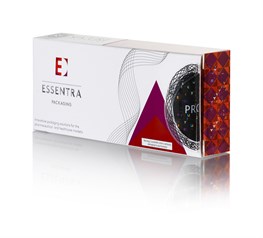In focus: Essentra's brand protection operations
Phil Taylor, 15-Aug-2014
 Towards the end of last year, filtration and packaging specialist Filtrona shook up its business with a restructuring and re-branding under the Essentra name.
Towards the end of last year, filtration and packaging specialist Filtrona shook up its business with a restructuring and re-branding under the Essentra name.
Essentra Packaging - which incorporates the company's photo identification cards business as well as tamper-evidence, tear tapes and anti-counterfeit and authentication technologies - recently reported first-half revenues rose by a healthy 47 per cent to £109m, although the numbers were inflated by the acquisitions of healthcare packaging businesses Contego and Dakota.
The proportion accounted for by brand protection technologies is not broken down, particularly as it spans various categories within the division, but as one of the few publicly listed companies in the anti-counterfeit sector the overall trajectory for the packaging business is interesting.
Simon Wildash, who until June was Essentra's head of marketing, told SecuringIndustry.com while still in the post that the re-branding and consolidation of activities into one division had made it easier for the company to position its brand protection offerings alongside its other packaging activities by dismantling silos in the business.
"It's an opportunity to add additional layers of protection to products in the healthcare, tobacco and consumer goods markets and others for which we are already providing carton packaging, tamper-evidence and tear-tapes," said Wildash.
Providing all these elements under one roof - alongside Essentra's printing capabilities - makes adding overt and covert security features such as holograms, ultraviolet and colour-changing inks and taggants more cost-effective, he added.
The Falsified Medicines Directive (FMD) in Europe has been a big driver for growth in companies offering serialisation of medicine packs, but the allied requirement for tamper-evidence has been a boost for companies such as Essentra, said Wildash.
Now, building in security to the packaging offering is a feature for somewhere between 30 and 40 per cent of Essentra's clients, he added, and at the moment the company is seeing a lot of interest in its taggants and also technologies that help consumers authenticate products, such as holograms and colour-shift inks.
The transition from Filtrona and former subsidiary Payne Security to the Essentra brand has also been accompanied by a streamlining in the focus of the security division. For example, the company no longer actively supplies into the document authentication market - other a position in photo identification - and it focuses mainly in areas such as healthcare/pharma, tobacco and food and beverage.
The acquisition of Contego early in 2013 made healthcare the biggest product category for Essentra, focusing on cartons, labels and blister pack foils along with the security technologies that sit alongside them.
"Our focus is on growing within these core categories, particularly through geographic expansion into areas such as the US and Asia," said Wildash, who also noted the emphasis for the company is increasingly on trying to develop strategic-level relationships with companies that cover all the bases from packaging design through to execution.
A major challenge facing security technology providers over the last few years has been the economic downturn, with client companies asking for more and more technological innovation but also reduced costs, and high-level agreements can be beneficial in helping to balance those competing requirements.
The key challenge is to understand the client's requirements, which can be variable and range from wanting consumers to verify product, monitoring grey market trade or preventing third-shift production in Asia, and "making the security solution invaluable," he concluded.
The company’s chief executive Colin Day told investors on the half-year results call that he anticipated strong growth in the second half for the packaging and other divisions, with higher levels of profitability as cost-cutting measures including the closure of facilities and headcount reductions continue to have an impact.
Day noted that the packaging business was driven in the second quarter by leaflets in healthcare, product launches such as its AquaSense moisture control label and Re:Close tape ranges and "value-added healthcare packaging, incorporating security technologies".
There was weakness in tobacco tear tapes, which Day attributed in part to uncertainty around the threat of plain packaging.
"We're also meeting the objective of winning more business with larger customers," he said, adding that the group also has discussions ongoing for new merger and acquisition (M&A) opportunities - across a number of its divisions - that could expand its geographic reach and extend its product ranges.
Related articles:

©
SecuringIndustry.com




 Towards the end of last year, filtration and packaging specialist Filtrona shook up its business with a restructuring and re-branding under the Essentra name.
Towards the end of last year, filtration and packaging specialist Filtrona shook up its business with a restructuring and re-branding under the Essentra name.